- Home
- Alison Weir
Queen Isabella
Queen Isabella Read online
Contents
Title Page
Epigraph
Acknowledgments
Author’s Note
Maps
INTRODUCTION The She-Wolf of France
PART ONE
Isabella and Edward
CHAPTER ONE The Fair Maiden
CHAPTER TWO The King Is Lovesick for His Minion
CHAPTER THREE All That Is Prudent, Amiable, and Feminine
CHAPTER FOUR His Dearest Companion
CHAPTER FIVE The Displeasure of the Queen
Photo Insert 1
CHAPTER SIX Then Let Her Live Abandoned and Forlorn
PART TWO
Isabella and Mortimer
CHAPTER SEVEN Mortimer and Isabel Do Kiss When They Conspire
CHAPTER EIGHT Welcome, in God’s Name, Madam and Your Son
CHAPTER NINE Plots and Stratagems
Photo Insert 2
CHAPTER TEN Now, Mortimer, Begins Our Tragedy
PART THREE
Isabella
CHAPTER ELEVEN Our Dearest Mother
Genealogical Tables
Abbreviations Used in the Notes and References
Notes and References
Notes on the Chief Sources
Select Bibliography
Illustration Credits
Reading Group Questions and Topics for Discussion
Excerpt from Mary Boleyn
About the Author
By the Same Author
Praise for Alison Weir’s Queen Isabella
Copyright
She-Wolf of France, with unrelenting fangs, that tear’st at the bowels of thy mangled mate…
—Thomas Gray
It is not wise to set yourself in opposition to the King. The outcome is apt to be unfortunate.
—Vita Edwardi Secundi
Acknowledgments
I should like to extend my grateful thanks to two fine authors and historians who have assisted me in my researches: Paul Doherty, who so kindly and generously sent me a copy of his authoritative 1977 thesis on Isabella of France, as well as the advance proofs of his fascinating book Isabella and the Strange Death of Edward II; and to Ian Mortimer, whose excellent biography of Roger Mortimer, The Greatest Traitor, I also had the privilege of reading at the advance proof stage, and whose comments I have found most valuable. Thank you both, most sincerely. Your works have been inspirational and of great assistance to me in this project. I should add that, although we have studied the same sources, my conclusions are rather different, which is entirely my responsibility!
As always, I owe a debt of gratitude to my agent, Julian Alexander, for his never-ending support; to my commissioning editors, Will Sulkin and Elisabeth Dyssegaard, for making this book possible, and for their great enthusiasm; and to my editorial director, Anthony Whittome, for his sensitive editing and creative vision.
I also owe a mention to all those other persons who have helped and inspired me over the past two years, and to those who have put up with not hearing from me for weeks on end while I finished this book. They are, in alphabetical order, Jacintha Alexander; Angela and John Bender; Neil and Lesley Blyth; John and Joan Borman; Tracy Borman, Julian Humphreys, and the team at English Heritage; Terrence Cahill; Ewan and Lesley Carr at Carrbooks; Lucinda Cook and the team at L.A.W.; Jane Dunn; Sister Mary Fox; Kerry Gill-Pryde; Sarah Gristwood; Eileen Hannah; Jean and Nick Hubbard; Fraser Jansen and the team at Methvens; Roger Katz and all at Hatchards; Christian Lewis, Kate Worden, and Rosie Gailer at Random House; Jill and Wyndham Lloyd-Davies; Robin Loudon; Alison Montgomerie and Roger England at Hay-on-Wye and Chipping Sodbury; Hawk Norton at London History; Richard Pailthorpe at Syon House; Kim Poster; Deborah Queen; Graham and Mollie Turner; Christopher Warwick; Martha Whittome; and Ann Wroe.
Finally, to my much-loved family: to my husband, Rankin; children, John and Kate; parents, Doreen and Jim; uncle John; cousins Chris, Peter, David, and Catherine; and my in-laws, Kenneth and Elizabeth and Ronald and Alison: thank you all for your unstinting kindness and support during the difficult period when this book was in preparation.
Author’s Note
I have generally adopted the anglicized or Latin form of names. Thus, in the interests of using the name by which she is now commonly called (and which was in fact used by many chroniclers in her own time), I have chosen to refer to the subject of this book as Isabella rather than use the French form of her name, Isabelle, by which she would usually have been known in her lifetime, Norman-French being the language of the English court in the early fourteenth century.
Unless otherwise indicated, place names have been given in their modern form.
Unless they are contemporary quotes that appear in the text, the chapter titles have been taken from Christopher Marlowe’s play Edward the Second.
INTRODUCTION
The She-Wolf of France
In Newgate Street, in the City of London, stand the meager ruins of Christ Church, a stark reminder of the devastation caused by the Blitz during the Second World War. This is the site of Christ’s Hospital, the Blue Coat School founded by Edward VI in the sixteenth century, destroyed during the Great Fire of 1666, and rebuilt by Sir Christopher Wren some years later. Yet these ruins stand on the site of an even older foundation, the magnificent monastery of the Grey Friars, originally built in 1225 and later endowed and reconstructed through the generosity of pious medieval queens. In the fourteenth century, this was a royal mausoleum set to rival Westminster Abbey as the resting place of crowned heads, yet tragically its splendors are long gone, having disappeared after Henry VIII dissolved the monastery in 1538, during the Reformation.
One of those who was buried in Greyfriars Church at Newgate, and whose tomb was lost, was Isabella of France, Edward II’s queen, one of the most notorious femmes fatales in history. Nowadays, popular legend has it that this sinister woman does not rest in peace but that her angry ghost can sometimes be glimpsed amid the ruins, clutching the heart of her murdered husband to her breast.
It is also claimed, even in the reputable publications of English Heritage, that this Queen’s maniacal laughter and agonized screams can be heard on stormy nights at Castle Rising in Norfolk, one of her favored residences. The belief still persists that, demented and insane, she was kept a prisoner here for twenty-eight years. And her unquiet ghost is also said to walk the secret passages below Nottingham Castle; she is believed to be searching in vain for her lost lover.
There is no doubt that the legends about Isabella of France paint a picture of a tragic, tormented, cruel, and essentially evil woman. And indeed, her historical reputation is not much more favorable. Since 1327, she has been more vilified than any other English queen. In her own lifetime, the chronicler Geoffrey le Baker called her “that harridan” or “that virago,” referring to her as “Jezebel” and to her episcopal followers as “priests of Baal.” Other chroniclers, although more discreet, were equally disapproving.
In 1592, in his play The Tragedy of Edward the Second, Christopher Marlowe wrote scathingly of “that unnatural Queen, false Isabel” and had Edward refer to her as “my unconstant Queen, who spots my nuptial bed with infamy.” So, too, in his controversial 1991 filmed adaptation of the play, the director Derek Jarman showed little sympathy for Isabella, portraying her as a sexually repressed virago.
Shakespeare had invented the epithet “She-Wolf of France” for Margaret of Anjou, the scheming, vindictive wife of Henry VI, but in the eighteenth century, when England was at war with France, the poet Thomas Gray applied it to Isabella, and it has stuck ever since. In his “The Bard”(1757), he speaks, with horrific significance, of the
…She-Wolf of France, with unrelenting fangs,
That tear’st the bowels of thy mangled mate.
In the twentieth century, the German playwright and poet Bertolt Brecht revived the same theme in his Life of Edward II of England. In this, Isabella declares:
I shall become a she-wolf
Ranging bare-toothed through the scrub,
Not resting
Until earth covers Edward…
Drenched by the rain of exile,
Hardened by foreign winds…
And in 1960, in his novel The She-Wolf of France, the acclaimed French writer Maurice Druon describes Isabella as having small, sharp, pointed carnivore’s teeth, like those of a she-wolf. Thus, the legend has become deeply entrenched in the popular consciousness.
Isabella has fared little better with the historians. In the mid-nineteenth century, Agnes Strickland wrote loftily that, since the days of “the fair and false Elfrida,” who is believed to have arranged the murder of her stepson King Edward the Martyr in 979, “no Queen of England has left so dark a stain on the annals of female royalty as Isabella,” who is “the only instance of a queen of England acting in open and shameless violation of the duties of her high vocation, allying herself with traitors and foreign agitators against her king and husband, and staining her name with the combined crimes of treason, adultery, murder and regicide.” This proved almost too much for Miss Strickland, with her highly developed Victorian moral values, and her account was strictly bowdlerized, but even more modern historians have little that is good to say about Isabella, and most repeat the calumnies of the old chroniclers. In 1955, V. H. H. Green called her “a woman of no real importance or attraction,” which is as inaccurate as it is dismissive, while in 1967, Kenneth Fowler denigrated her as “a woman of evil character, a notorious schemer” who was infamous “for her marital inconstancy,” although he did concede that this was “in part excused by her husband’s weaknesses.” Elsewhere, Isabella is “one of the most beautiful but depraved women of her time,” or simply “Isabella the Mad.”
How, then, did Isabella acquire such a reputation? Married at twelve in 1308 to the homosexual Edward II, she grew up to be a legendary beauty yet was largely neglected by her weak husband and cruelly slighted by his vicious favorites. For many years, she endured this treatment, gaining renown as a model consort and a peacemaker. But in 1325, driven to desperation as a result of being deprived of her liberty, her children, and her income, she managed to escape to France, where she began a doubly adulterous affair with Roger, Lord Mortimer, an exiled English traitor. Together, they led the first successful invasion of England since the Norman Conquest, deposing Edward II and setting themselves up as regents for Isabella’s eldest son, Edward III. Some months later, it was announced that Edward II had died in captivity, and soon afterward, rumor had it that he had been brutally murdered on the orders of Mortimer and Isabella. Before then, however, the unpopular policies of the regents had turned the people against them. When Edward III came of age in 1330, he overthrew their regime and had Mortimer executed. Isabella was spared any blame and spent the last twenty-eight years of her life in honorable retirement. Nevertheless, the taints of adultery, treason, and murder have blotted her name ever since.
Other queens have been accused of murder, treason, and adultery, but they have not attracted such enduring opprobrium, perhaps because the case against them has never been satisfactorily proved. Few now believe that Anne Boleyn betrayed Henry VIII with five men and also plotted his death. Katherine Howard always denied committing adultery. Monastic gossip accused Isabella of Angoulême of taking lovers: King John is said to have had them strung up above her bed, yet he never openly charged her with infidelity, and there is no question attached to the legitimacy of her children. Eleanor of Aquitaine was probably unfaithful to her first husband and led a rebellion against her second, Henry II, yet few writers now castigate her for it.
But Isabella is known to have lived in adultery for at least four years, in flagrant violation of the moral code of her time. Furthermore, with her lover, she plotted and mounted the successful invasion against her husband, which led to his deposition and his reputed murder. Such conduct on the part of a queen outraged conventional ideals of womanhood, which demanded that the King’s wife be utterly loyal and sexually beyond reproach; and it also desecrated the sanctity of monarchy. Hence the charges of adultery and treason.
As for murder and regicide, the evidence is murkier. We are now not even certain that Edward II was murdered, still less that his estranged wife was a party to it, although many historians have assumed that she was.
It is her sexual misconduct that has above all made Isabella infamous. Her reputation rests largely on the prejudices of monkish chroniclers and Victorian historians. Yet as Norah Lofts has pointed out, if she had not taken a lover, her story would have been very different. An examination of contemporary records reveals that she had many fine qualities, and instead of incurring shame, dishonor, and revilement, she might have been seen as a liberator, the savior who unshackled England from a weak and vicious monarch and helped to put a strong king on its throne.
Changing social attitudes now permit a more tolerant and sympathetic view of Isabella’s personal relationships. What comes across most strongly in her story is the sheer awfulness of the situation in which she eventually found herself and from which she managed to escape only by using her own initiative and cunning. She overcame male prejudice, won the sympathy of the people, and emerged as a heroine. It was her subsequent deeds that greatly shocked her contemporaries, who had hitherto perceived her to be a model queen. But this heroine was fatally flawed, and thereafter, she found herself on a downhill slide to tragedy and obloquy.
Remarkably, there has never been a full-length published biography of Isabella. An unpublished one exists in the form of Paul Doherty’s 1977 thesis, primarily an academic study. Doherty’s recent book on Isabella is not a biography, for it focuses mainly on the mystery surrounding Edward II’s fate and Isabella’s involvement in it. Isabella has been the subject of many learned articles in historical journals and, of course, of Agnes Strickland’s greatly outdated life. A reappraisal is therefore long overdue.
Nowadays, after decades of change in the perception of the role of women, it is possible to view Isabella in a new light: to pity her, even to respect her. Women are no longer expected to be placid adornments of their husbands or the victims of circumstance; they are movers and shakers, able to shape their own destinies, make their own choices, and choose their own sexual partners. What once appeared so terrible seems so no longer.
Seduced by the drama of Isabella’s life, I came to this project with many of the traditional misconceptions. I certainly didn’t like her very much, and this rather concerned me, because I have always found, as a writer, that it helps to have a certain rapport with my subject. Eleanor of Aquitaine was undoubtedly a flawed woman, yet I had great admiration for her. Fortunately, and against all my expectations, while I was working on this book, my opinion of Isabella was gradually revised, as the sources revealed a rather different person from the one I had imagined. Isabella was every bit as vigorous and capable as Eleanor of Aquitaine, and in many ways, their experiences were similar. Both were spirited and cultivated Frenchwomen; both faced hardship and adversity; both were highly sexed and trapped in frustrating marriages; both had to cope with their spouses’ infidelities, and both took lovers; more seriously, both led rebellions against their royal husbands, and both spent time under house arrest; both were adept at statecraft; and both were controversial in their own day. But unlike Eleanor, as we have seen, Isabella does not enjoy a brilliant posthumous reputation.
Now, having reevaluated all the evidence for Isabella’s life, and having in the process stripped away the romantic legends and lurid myths, I have not only enormous sympathy for her but also considerable regard. Consequently, the aim of this book is to restore the reputation and rehabilitate the memory of a remarkable yet grossly maligned woman, who was the victim, not of her own wickedness, but of circumstances, unscrupulous men, and t
he sexual prejudices of those who chose to record her story. Like Eleanor, she was flawed, certainly, but her failings were very human ones, and there is much to like about her. What follows, therefore, is intended as the first realistic portrait of this most vilified of queens.
Alison Weir
Eddleston, Scottish Borders, and Carshalton, Surrey
20 January to 5 August 2004
PART ONE
Isabella and Edward
I am your King, though wanting majesty.
CHAPTER ONE
The Fair Maiden
On 20 May 1303, a solemn betrothal took place in Paris. The bride was seven years old, the groom, who was not present, nineteen. She was Isabella, the daughter of Philip IV, King of France; he, Edward of Caernarvon, Prince of Wales, the son and heir of Edward I, King of England.1
The Prince had sent the Earl of Lincoln and the Count of Savoy as his proxies, and during the ceremony, they formally asked the King and Queen of France for the hand of their daughter, the Lady Isabella, in marriage for the Prince of Wales. Consent was duly given, then Gilles, Archbishop of Narbonne, the presiding priest, required Isabella to plight her troth. Placing her hand in that of the Archbishop, she duly did so, giving her assent to the betrothal on condition that all the articles of the marriage treaty were fulfilled.2
This union had been arranged after tortuous negotiations to cement a lasting peace between those old warring enemies, England and France. Isabella’s father, Philip IV, known as Philip the Fair, was the most powerful ruler in Christendom at that time and also the most controversial. Not only had he been engaged in territorial wars with both England and Flanders for the past seven years, he had also, despite boasting the title of “Most Christian King,” become involved in a bitter conflict with the Papacy after imposing limitations on the Pope’s authority in France. This was to lead to his excommunication only months after his daughter’s betrothal.

 Richard III and the Princes in the Tower
Richard III and the Princes in the Tower Britain's Royal Families: The Complete Genealogy
Britain's Royal Families: The Complete Genealogy The Lady in the Tower: The Fall of Anne Boleyn
The Lady in the Tower: The Fall of Anne Boleyn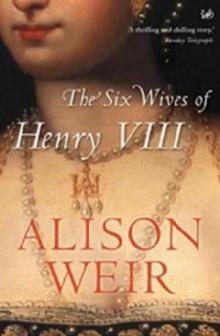 Six Wives of Henry VIII
Six Wives of Henry VIII Elizabeth of York: A Tudor Queen and Her World
Elizabeth of York: A Tudor Queen and Her World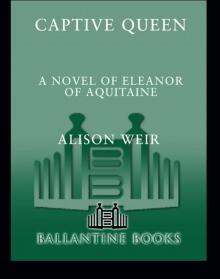 Captive Queen
Captive Queen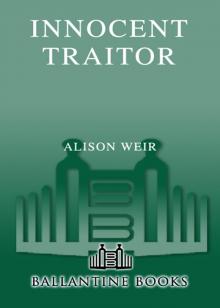 Innocent Traitor
Innocent Traitor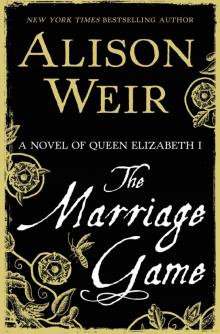 The Marriage Game
The Marriage Game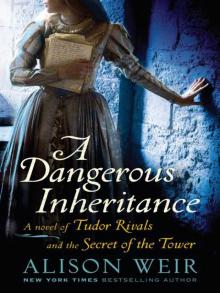 A Dangerous Inheritance
A Dangerous Inheritance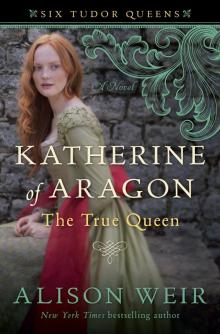 Katherine of Aragón: The True Queen
Katherine of Aragón: The True Queen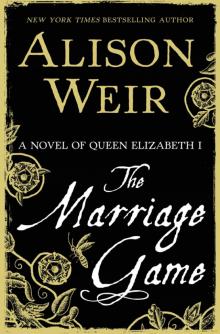 The Marriage Game: A Novel of Queen Elizabeth I
The Marriage Game: A Novel of Queen Elizabeth I Princes in the Tower
Princes in the Tower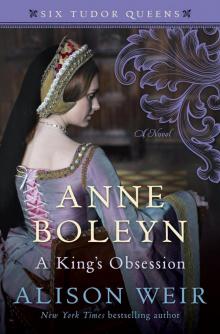 Anne Boleyn: A King's Obsession
Anne Boleyn: A King's Obsession Traitors of the Tower
Traitors of the Tower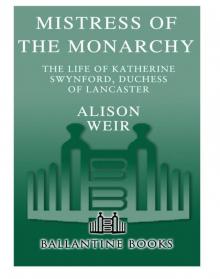 Mistress of the Monarchy: The Life of Katherine Swynford, Duchess of Lancaster
Mistress of the Monarchy: The Life of Katherine Swynford, Duchess of Lancaster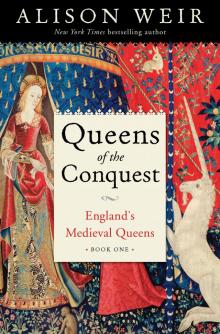 Queens of the Conquest: England’s Medieval Queens
Queens of the Conquest: England’s Medieval Queens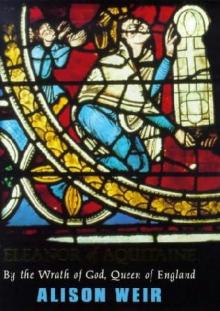 Eleanor of Aquitaine: A Life
Eleanor of Aquitaine: A Life Mary, Queen of Scots, and the Murder of Lord Darnley
Mary, Queen of Scots, and the Murder of Lord Darnley Henry VIII: The King and His Court
Henry VIII: The King and His Court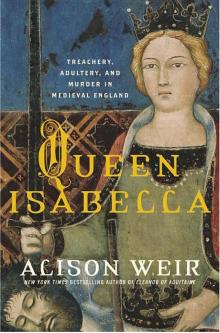 Queen Isabella: Treachery, Adultery, and Murder in Medieval England
Queen Isabella: Treachery, Adultery, and Murder in Medieval England Katheryn Howard, the Scandalous Queen
Katheryn Howard, the Scandalous Queen Arthur- Prince of the Roses
Arthur- Prince of the Roses The Wars of the Roses
The Wars of the Roses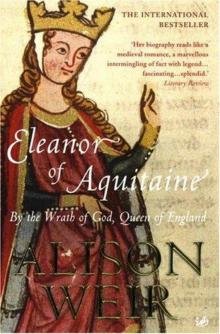 Eleanor of Aquitaine: By the Wrath of God, Queen of England
Eleanor of Aquitaine: By the Wrath of God, Queen of England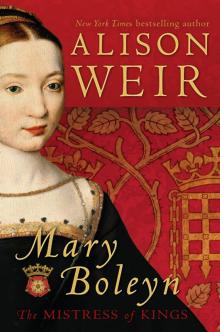 Mary Boleyn: The Great and Infamous Whore
Mary Boleyn: The Great and Infamous Whore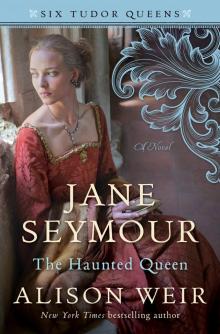 Jane Seymour: The Haunted Queen
Jane Seymour: The Haunted Queen Anna of Kleve, the Princess in the Portrait
Anna of Kleve, the Princess in the Portrait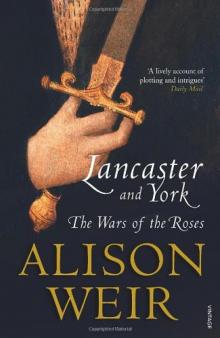 Lancaster and York: The Wars of the Roses
Lancaster and York: The Wars of the Roses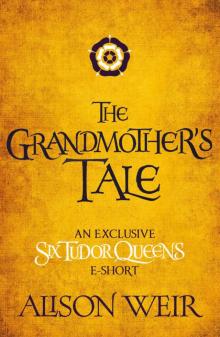 The Grandmother's Tale
The Grandmother's Tale The Princess of Scotland (Six Tudor Queens #5.5)
The Princess of Scotland (Six Tudor Queens #5.5)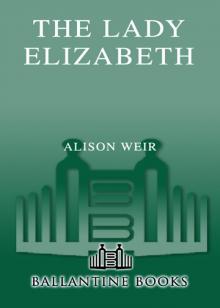 The Lady Elizabeth
The Lady Elizabeth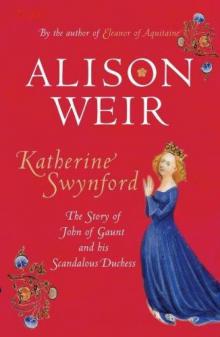 Katherine Swynford: The Story of John of Gaunt and His Scandalous Duchess
Katherine Swynford: The Story of John of Gaunt and His Scandalous Duchess The Curse of the Hungerfords
The Curse of the Hungerfords The Lost Tudor Princess: The Life of Lady Margaret Douglas
The Lost Tudor Princess: The Life of Lady Margaret Douglas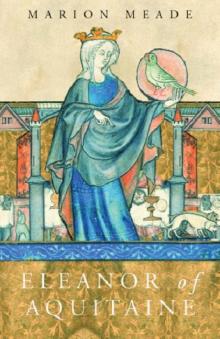 Eleanor of Aquitaine
Eleanor of Aquitaine Mistress of the Monarchy
Mistress of the Monarchy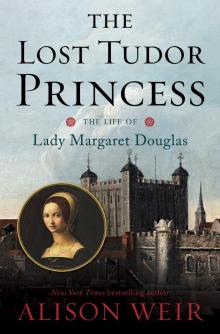 The Lost Tudor Princess
The Lost Tudor Princess Henry VIII
Henry VIII Anne Boleyn, a King's Obsession
Anne Boleyn, a King's Obsession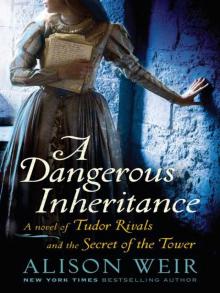 A Dangerous Inheritance: A Novel of Tudor Rivals and the Secret of the Tower
A Dangerous Inheritance: A Novel of Tudor Rivals and the Secret of the Tower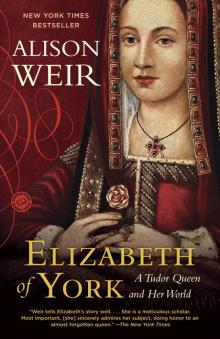 Elizabeth of York
Elizabeth of York Katherine of Aragon, the True Queen
Katherine of Aragon, the True Queen Katherine Swynford
Katherine Swynford Wars of the Roses
Wars of the Roses Queens of the Conquest
Queens of the Conquest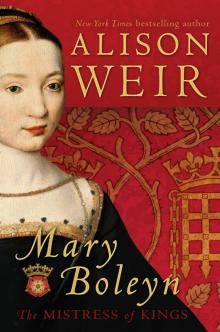 Mary Boleyn
Mary Boleyn Britain's Royal Families
Britain's Royal Families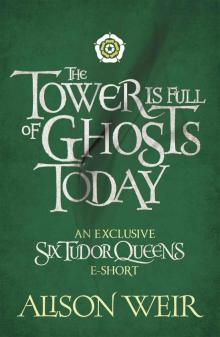 The Tower Is Full of Ghosts Today
The Tower Is Full of Ghosts Today Life of Elizabeth I
Life of Elizabeth I Anne Boleyn A King's Obssession
Anne Boleyn A King's Obssession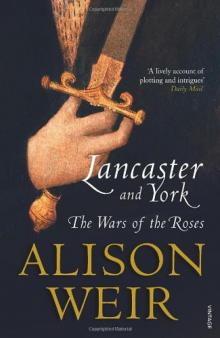 Lancaster and York
Lancaster and York Jane Seymour, the Haunted Queen
Jane Seymour, the Haunted Queen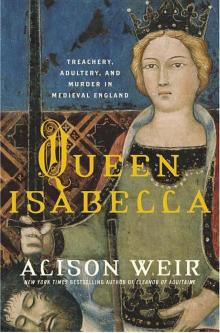 Queen Isabella
Queen Isabella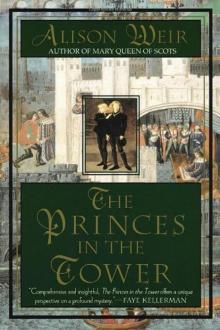 The princes in the tower
The princes in the tower